It was 1925, and the newest development in entertainment was the radio. There were only 40 radio stations in Canada and very few homes had a receiver – many listeners had only a crystal set with headsets. But that was enough for a Bill to be introduced in Parliament to amend the Copyright Act to include “radio communications” requiring stations to pay copyright fees for any music on the station.
Station CKNC in Toronto was threatened with legal action if copyright fees were not paid for the recorded music they broadcast. Radio station owners conferred with one another and this resulted in a meeting of owners which was held in Montreal on January 7th, 1926 with A. R. McEwan of Canadian National Railways elected as Chairman.
Present were representatives of nearly all the radio stations in Central Canada. The entire discussion was about copyright. They agreed they would probably have to pay – the question was – how much? They did agree that a national organization of broadcasters should be set up, selected a name – “The Canadian Association of Broadcasters” and a committee to set a location and date for the meeting.
The first Annual Meeting of the CAB took place in Toronto in the King Edward Hotel on January 28, 1926.
Despite mixed interests, the group unanimously formed the “Canadian Association of Broadcasters” and elected as its first president Jacques Cartier, of CKAC, Montreal. Delegates quickly agreed to the name of the association; there was agreement that copyright owners should be paid, but the question remained, “how much”? They launched a successful lobby to have a royal commission deal with the issue. The commission’s recommendations led to formation of an impartial Copyright Appeal Board. The negotiations on copyright would continue to be a focal point for the CAB into the next century.
It was about this time that the International Bible Students’ Association found themselves in trouble with controversial sentiments being expressed over the air on their radio stations, and the Federal Government denied the renewal of their licences. This lead to fury in Ottawa with the opposition crying foul, concerned that the government could perhaps refuse anyone’s licence without cause. The result was the establishing of the Aird Royal Commission, which was charged with undertaking the first official review of broadcasting.
Then came the 1929 stock market crash and everything slowed down. It wasn’t until 1932 that the Government finally acted on part of the Aird report by establishing the Canadian Radio Broadcasting Commission – which not only governed all radio in Canada – but also bought the Canadian National Radio stations and formed its own Network, using the three CNR stations and private stations as affiliates to serve the larger populated centers across the country.
Jacques Cartier was succeeded as President in 1929 by M.K. Pyke of CHYC Montreal. He served for a two-year term, after which Harry Moore of CFRB Toronto became President from 1931 to 1934.
Graham Spry’s Canadian Radio League, which had been formed in 1930, the government for a truly national broadcasting system, to be owned and run by a government corporation. They promoted the recommendations of the Aird report and had the ear of many politicians. The League didn’t get all that they wanted, but had some success, and they continued to lobby for more restrictions on the private broadcasters.
In 1936, the government further tightened its grip on private broadcasting. It set up the Canadian Broadcasting Corporation (CBC) with authority to control all networks and recommend who should get station licenses. Broadcasters were warned that their licenses might not be renewed and that any improvements to facilities were at their own risk. Ironically, those heeding the warning faced criticism for not upgrading their stations to compete with U.S. outlets. Likewise, some broadcasters who responded to demands to use more local talent were berated for being too commercial because they sold more ads to cover the higher costs.
The CAB ‘goes National’
That private broadcasting exists at all is largely due to a small band of determined broadcast pioneers who resisted an early move to nationalize their business while still in its infancy.
Despite the threat, several key members balked at opposing nationalization and resigned from the CAB. Severely crippled and with barely $1,000 in its coffers, the association teetered on the brink of collapse. Undeterred, the remaining members held an emergency meeting and agreed to keep the CAB afloat. They felt strict self-regulation was the best deterrent to nationalization.

It was in 1936 that Harry Sedgwick, President of CFRB Toronto, became President of the CAB, a position he held until 1941, when he became the Chairman of the Board of CAB, a position he held until 1947. He is credited with saving the CAB and indeed building a sound base for the future. In Western Canada, the Western Association of Broadcasters had been formed, partly because transportation to meetings in the East was difficult and time consuming, and partly because they had slightly different views. It was Sedgwick who went out west and sold the WAB on joining forces to promote a unified approach for the private industry’s views to the government and to work together on copyright problems. Harry’s brother, Joseph, was the CAB’s general counsel for 14 years, starting in 1939.
Laying a solid foundation
In 1941 the CAB set up its first office and first permanent executive to deal with the broadcasting authority and other key issues. These included license fees, taxation, duties on equipment, technical standards. And there was always a standing committee on copyright problems.
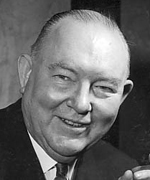
It hired Glen Bannerman as President and General Manager in 1941. In 1943, the CAB adopted the first formal CAB Code of Ethics. It also created an ‘associate member’ category for National Sales Firms (which sold airtime on behalf of the stations they represented), a category which was later expanded to embrace radio producers, equipment manufacturers and news services.
Stability and Growth

In 1946, H.S. Dawson replaced Bannerman as General Manager. T. Jim Allard, who had moved from CJCA Edmonton to Ottawa in 1944 to help strengthen the CAB Office was named to succeed Dawson as General Manager in 1948, and soon instigated a move of the CAB’s head office from Toronto to Ottawa. He converted the organization’s letterhead and documents to a bilingual format – Canadian Association of Broadcasters/l’Association Canadienne des Radio-diffuseurs (CAB/ACR) – and began sending material to members in their own language.
In 1953, Allard was promoted to executive vice-president, a post he held for 20 years. Following the licensing of Canada’s first private TV stations in 1953/54, the organization’s name was changed to the Canadian Association of Radio and Television Broadcasters (ARTB) but five years later it reverted to the less cumbersome CAB/ACR.
“La Radio Privee du Quebec Inc.” was dissolved in 1954 and replaced by “l’Association canadienne de la radio et de la television de langue francaise”. This provincial body, in conjunction with the CAB/ACR, set up a Montreal office to serve both associations and give French language members a stronger voice within Quebec. The CAB/ACR also opened advertising sales bureaus in Toronto and Montreal.
In addition to its work in the fields of regulation and advertising, the CAB had moved into programming areas with the establishment in 1945 of Report from Parliament Hill, a weekly report by Members of Parliament to their home constituents organized by the CAB Ottawa office. This initiative was later followed by the CAB program exchange which allowed the interchange of local programming to other stations. Both of these services were great successes, and carried on for many years.
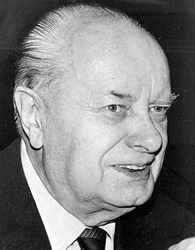
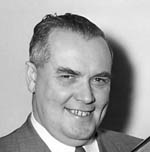
When Harry Sedgwick completed his term as Chairman of the Board of the CAB, he was succeeded in 1948 by Dick Rice of CFRN. For the next nine years, the position was held by Bill Guild (1949, 1950), Malcolm Neill, (1951, 1952) Frank “Tiny” Elphicke (1953), Finlay MacDonald (1954), Jack Davidson (1955), Fred Lynds (1956), and Vern Dallin (1957).
During this period, the CAB continued to pursue, as its major objective, the quest for an independent body to regulate all broadcasting. The CBC was both regulator and competitor for audience and the advertising dollar. Several briefs were submitted to royal commissions and Parliamentary committees, with spin-offs to the general public.
In 1955, another Royal Commission was established to look at broadcasting, and it tabled its report in March 1957. Dubbed the Fowler report, it recommended the separation of the regulation of broadcasting from the CBC.
The following year’s election saw the defeat of the Liberals and the new Conservative Prime Minister John Diefenbaker quickly passed a new Broadcasting Act which included provision for the formation of a new regulatory authority to be named the Board of Broadcast Governors (BBG).


It was 1958 and the CAB had won its long contested battle.
At the time there were 172 private radio stations, 28 FM and 38 TV stations.
Second Television service arrives
The BBG acted quickly on CAB’s request for second TV licenses in the major cities, which had previously been the single domain of the CBC. They also opened up the FM frequencies for radio broadcasters, something the CBC had delayed since 1948.

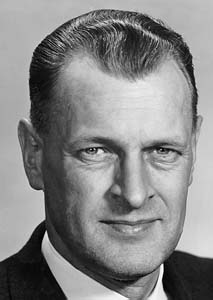
In the decade of the BBG, the CAB was involved with a continual stream of matters arising out of the change in regulators. New FM regulations with heavy accent on the kinds of music to be played, and including controls on listener phone in shows, concern about violence on TV, and the relaxation of the rules regarding beer or wine commercials, and many other matters kept the staff and Boards extremely busy.
With Television taking up so much of the CAB board’s time, it was appropriate to separate radio and TV into two sub-sections of the board, and the staff was augmented to carry the load.
In 1963, a succession of controversies involving the CAB, the CBC and the BBG prompted the Government to require the heads of these three organizations to form a committee (which soon became popularly known as “The Troika”) to review various contentious issues. These included some of the Fowler Commission’s recommendations and the furore which surrounded CTV’s acquisition of the Grey Cup television rights (which had been owned by the CBC). In the end, Don Jamieson (CAB), J. Alphonse Ouimet (CBC) and Dr. Andrew Stewart (BBG), delivered individual reports, though those of the CAB and BBG shared many similarities.
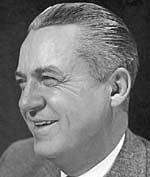

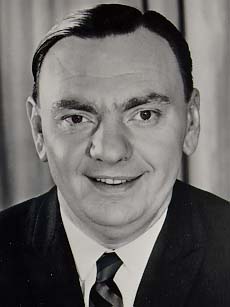

The decade of the BBG was one of consultation – private meetings with the men operating the broadcasting business, as the BBG sought to learn how the private sector might be likely to react to various proposed rulings. The Chairmen of the CAB boards during this consultative period were Malcolm Neill (1958, 1959), Murray Brown (1960), Don Jamieson (1961-1964) Jean Pouliot (1965, 1966), Cam Ritchie (1967) and Ray Peters (1968).
In 1968, acting partly on the advice of the 1966 Fowler report, the Government passed a new Broadcasting Act, which provided for the formation of the Canadian Radio and Television Commission (CRTC), and a whole new scene opened up as the CAB prepared for the 1970s.
Chairmen during this time were Raymond Crepault (1969-70), Bill McGregor (1970-71), Henri Audet (1971-72) and Don E.M. Hamilton (1972-73).
The Issue of Canadian Content
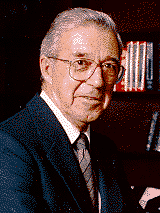

The advent of the CRTC, under the chairmanship of Pierre Juneau, brought with it in the 1970s substantial pressure on broadcasters, in both radio and television, to increase the amount of Canadian content in their programming. New regulations were proposed which would require significantly more Canadian artists’ recordings to be included in radio playlists, while the television broadcasters faced requirements for more time to be devoted to, and more money spent on, Canadian drama.
The CAB responded to its members’ wishes by mounting strong opposition to these proposals, but while a few small victories were achieved, the majority of the CRTC’s proposals stayed in place. A byproduct of this activity was that some major television broadcasters disassociated themselves from the CAB’s position and resigned from the Association, but they returned in later years.

Following Allard’s retirement in 1973 the position of Executive Vice-President was abolished. CAB/ACR reverted to the practice of hiring a full time paid president, and named Dr. Pierre Camu to the post, where he served from 1973 – 1977. Mr. Camu had been head of the St. Lawrence Seaway Authority and had held posts at Laval and Ottawa Universities. Camu was later to be appointed chair of the CRTC.
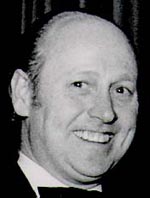
Succeeding him were Ernest Steele (1978-85) and David Bond, who served until 1987. Both Steele and Bond were heavily occupied with helping broadcasters cope with a serious, prolonged recession. Advertising sales slumped badly. Small and medium market radio stations were particularly hard hit. Many temporarily left the association to save the membership fees.
In 1986, the Canadian Association of Broadcasters’ Hall of Fame was established to honour those pioneers who distinguished themselves in the early days of the industry. Eighty-six men and women were inducted into the Hall of Fame at the Vancouver Annual meeting. As many as a dozen were subsequently added each year at this Annual tradition.


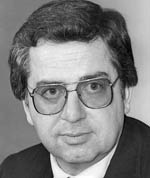
Revamping for the 90s and beyond
Taking over the helm for the next 13 tumultuous years (1988-2001) was Michael McCabe, a communications expert with vast experience in high level government. In 1989, working with broadcasters and outside experts, he drafted a visionary five year “TAKING THE LEAD” strategy for the CAB/ACR, which paved the way, a few years later, for “TAKING THE LEAD II” and “FUTURE PLAN”.
Another major initiative under McCabe’s direction was “ON-AIR FOR CANADA”, a national award-winning radio/TV spot campaign aimed at building a more tolerant society.
Now, more than ever, the association’s views began to be widely sought by senate and parliamentary committees, the CRTC, Canadian Heritage, and industry groups. The association fostered closer relationships with the cable and music industries and, in 1998, launched the annual Canadian Radio Music Awards. It inaugurated annual scholarships to talented students and began to reward broadcasters’ programming and public service achievements with the CAB Gold Ribbon Awards.
The Association’s groundbreaking codes on Violence, Children’s Programming, Sex-Role Stereotyping, and portrayal of minorities were well-received by the public. Audiences were invited to register concerns about programming with the Canadian Broadcast Standards Council, a body launched by the CAB/ACR in 1990 and the first of its type in North America.
The beginning of the end?

Michael McCabe retired as President of the CAB/ACR in November 2001, and was replaced in January 2002 by Glenn O’Farrell, an experienced lawyer and senior broadcaster.
However, after over 80 years of existence, during which it had nurtured private broadcasting from its infancy as a passing fad into a great Canadian industry, the CAB/ACR began to hear concerns from some of its members as the new century began, about the economics of membership. CTV had gone from a group of privately owned stations to a powerful network, with owned and operated affiliates, and many of the bigger station owners were adding more and more stations to their holdings. Some of these groups began to wonder whether they needed to pay heavy fees to have the CAB plead their causes in government and CRTC circles, when they had the strength and know-how to do this themselves.
In addition, the cross-ownership that had developed with cable operators themselves owning television stations and specialty channels had made it more and more difficult for the CAB to find common ground between cable companies and conventional broadcasters.
It was against this background that Glenn O’Farrell announced his resignation as President of the CAB in December 2008, and was gone early in January 2009. On January 28th, the Association announced a series of staff cuts, as well as its decision to “restructure the CAB as a streamlined and effective advocacy association representing private radio and television broadcasters to the federal government”. The CAB also announced the cancellation of its planned 2009 Convention, which had been scheduled for November in Vancouver.
The Association continued operations through 2009 with no President, but under the chairmanship of Charlotte Bell, who had agreed to serve a second term in the chair. At the CAB AGM in December 2009, incoming Chairman Elmer Hildebrand was asked to come up with a new strategy for the Association. On February 18th, 2010, the Canadian Press reported that the CAB had decided to cease operations effective in June 2010. Hildebrand was reported as saying that this course had become inevitable, his Board “having reached an impasse with some of its members”. Efforts to find common ground had not been successful.
Hildebrand, whose Golden West Broadcasting owned 28 radio stations, told Canadian Press that he hoped to form a new organization that would just represent radio broadcasters.
But it soon emerged that there was sufficient support from a majority of former CAB members, in television, radio and specialty programming, for the continuation of the Association, but with a tighter, more targeted mandate to focus specifically on matters of collective importance for the entire industry. There would be no fulltime staff, the CAB relying instead on independent lawyers and consultants such as former CAB staffer Sylvie Bissonnette.
Matters occupying the new Board would include copyright advocacy, including support of Bill C-32; the continuation of the Canadian Broadcast Standards Council (CBSC); accessibility issues like closed-captioning and described video; and administrative functions related to various funds such as FACTOR/MusicAction, Radio Starmaker Fund/Fonds Radiostar as well the DTH-funded Small Market Local Programming Fund.
A new, smaller CAB Board was formed in late 2010. It consisted of:
- Sylvie Courtemanche, Corus Entertainment (Chair);
- Sophie Émond, Astral (Vice-Chair);
- Kevin Goldstein, CTVglobemedia (Treasurer);
- Mike Keller, NewCap (Secretary);
- Elmer Hildebrand, Golden West Broadcasting;
- Jonathan Medline, Shaw Media; and
- Susan Wheeler, Rogers.
The ‘new CAB’ would share office space in Ottawa with the Canadian Broadcast Standards Council. A revamped website, www.cab-acr.ca, was introduced.
As of June 2012, the CAB Board consisted of:
- Rick Arnish, Jim Pattison Broadcast Group (Chairman)
- Kevin Goldstein, Bell Media (Vice-Chairman)
- Sylvie Courtemanche, Corus Entertainment (Treasurer)
- Gordon Rawlinson, Rawlco
- Jonathan Medline, Shaw
- Pierre Rodrigue, Astral
- Glenda Spenrath, Newcap Radio
At its AGM, held on February 18th 2014, the CAB named the following Board of Directors for 2013-14:
- Kevin Goldstein, Bell Media Chairman
- Susan Wheeler, Rogers Media Vice-Chair
- Sylvie Courtemanche, Corus Entertainment Secretary
- Rick Arnish, Jim Pattison Broadcast Group
- Nathalie Dorval Cogeco Inc.
- Cynthia Rathwell, Shaw Communications
In December 2015, the CAB elected a new Board of Directors, and officers, as follows:
– Susan Wheeler, Rogers Media, Chair
– Glenda Spenrath, Newcap, Vice-Chair
– Sylvie Courtemanche, Corus Entertainment, Secretary
– Kevin Goldstein, Bell Media
– Rick Arnish, Jim Pattison Broadcast Group
– Nathalie Dorval, Cogeco Inc.
– Paul Cowling, Shaw Media
As of the summer of 2017, the CAB Radio Council members were:
Ian Lurie (Chair; Newcap),
Troy Reeb (Corus), Randy Lennox (Bell), Julie Adam (Rogers), Richard
Lachance (Cogeco Media), Sylvain Chamberland (Attraction Media),
Rod Schween (Pattison), Elmer Hildebrand (Golden West), Geoff Poulton
(Vista) and Paul Larch (Larche).
In the summer of 2017, the following were the members of the CAB Board:
Chair, Ms. Nathalie Dorval Vice-President, Regulatory Affairs and Copyright Cogeco Inc.
Vice-Chair, Mr. Rod Schween President and General Manager Jim Pattison Broadcast Group
Secretary Ms. Lenore Gibson Senior Counsel, Regulatory Affairs Bell Media Inc.
Treasurer Ms. Glenda Spenrath Vice-President, Operations & Regulatory Affairs Newcap Radio
Director Ms. Heidi Bonnell Vice-President, Federal Government Affairs Rogers Media Inc.
Director Mr. Matt Thompson Director, Legal Affairs Corus Entertainment Inc.
In the summer of 2018, Nathalie Dorval was still Chair of the CAB. In her Summer Message from the Chair to the members, she reported that the Association continued to represent its members in ongoing communications with government officials, appearances before parliamentary committees and filings in public consultations. These activities involved such diverse areas as proposals to prohibit food and beverage marketing to children, spectrum reallocation in the 600m band, implementing a Local News Fund, participation in consultations on the options for reform to the Copyright Board of Canada, and participating in the CRTC consultation on the Future Programming Distribution Models on behalf of radio members. In addition, the CAB apppointed Sylvie Courtemanche as President of the Canadian Broadcast Standards Council.
In conclusion, Ms. Dorval undertook that the CAB would continue to deliver on its commitment “to safeguard, support and promote the Canadian Broadcast Industry.” She also made a point of noting the valuable ongoing support the CAB continued to receive from Sylvie Bissonnette, the CAB’s VP Finance and Administration and CFO, Peter Miller, Regulatory Counselor and Facilitator, and Kirk Nesbitt, Technical Advisor.
In the summer of 2018 the CAB Board of Directors consisted of:
Chair Ms. Nathalie Dorval, VP Regulatory Affairs and Copyright, Cogeco Inc.
Vice-Chair Ms Lenore Gibson, Senior Counsel, Regulatory Affairs, Bell Media Inc.
Secretary Mr. Matt Thompson Director, Legal Affairs, Corus Entertainment Inc.
Treasurer Ms. Glenda Spenrath, Vice-President, Operations & Regulatory Affairs Newcap Radio
Director Ms. Heidi Bonnell Vice-President, Federal Government Affairs, Rogers Media Inc.
Director Ms. Carmela Laurignano, VP & Radio Group Manager, Evanov Communications Inc.
In the summer of 2019, the CAB Board consisted of:
Chair Lenore Gibson, Bell Media Inc.
Vice-Chair Nathalie Dorval, Cogéco Inc.
Treasurer Susan Wheeler Rogers Media Inc.
Secretary Carmela Laurignano Evanov Communications Inc.
Directors:
Robin Hildebrand Golden West Broadcasting
Matt Thompson Corus Entertainment Inc.
Sylvie Bissonnette continued in her role as V.P. Finance and Administration.
In her Report to the membership in the summer of 2019, Chair Lenore Gibson said: :
“This Summer 2019 edition of the CAB newsletter will keep you up-to-date on what we have achieved on your behalf over the past year.
• The legislative review of the Broadcasting Act where we endorsed an appropriate and equitable regulatory framework to apply to Canadian broadcasters and foreign, on-line platforms;
• Health Canada’s consultations on the proposal to restrict food and beverage marketing to children as well as the potential measures to reduce the impact of vaping products advertising on youth and non-users of tobacco products, to ensure that the legislation does not impact broadcasters;
• The consultation on spectrum reallocation in the 600 MHz Band, including numerous meetings with Government officials seeking reimbursement of the relocation costs for OTA broadcasters;
• The proposed journalism tax credit for local news wherein we requested that the Government’s exclusion of broadcasters from the credits be reconsidered; and
• Various CRTC public consultations including the Call for comments on Canadian programming expenditures, resisting the potential for the digital activities of Canadianlicensees to be included.
We also appeared before the Standing Committee on Industry, Science and Technology in their study of the Statutory Review of the Copyright Act as well as the Standing Committee on Canadian Heritage in their study Remuneration Model for Artists and Creative Industries. Both Committees have released their reports, with mixed results for broadcasters. While any potential legislative changes are very much in the distant future, the CAB will focus on containing copyright royalties, either through this legislative review or through the myriad of copyright tariffs paid by you.
With the Parliamentary recess and the pending Federal election, many of the above files have been “put on hold” within the Government. However, rest assured that we continue to educate decision-makers about the broadcasting industry, our positive contribution to Canada and the challenges that we face.”
On Sunday December 1st 2019, Jessie McLean died at the age of 78. Jessie enjoyed a long and impressive career in broadcasting, working first for CHSJ in Saint John, New Brunswick and then from 1972 for the Canadian Association of Broadcasters in Ottawa, first as an accountant, and also taking on duties related to staging the CAB’s annual conventions. In 1978, she was named Director, Administrative Services, managing the office staff and membership mailouts, among other duties, and in 1982 was promoted to Director of Finance and Administration. McLean was inducted into the CAB Hall of Fame in 1996 and retired in 1997. From 1980 to 1995, she also served as Secretary-Treasurer of the Canadian Communications Foundation.
In August, it was announced that Sylvie Bissonnette, the Canadian Association of Broadcaster’s Vice-President, Finance & Administration and CFO, would retire in November 2020. She had joined the Association in 1991, and had been de facto President of the organization for some time.
On November 16th, the Canadian Association of Broadcasters announced the appointment of Kevin Desjardins as its new President, effective November 16, 2020, replacing Sylvie Bissonnette. He would be the first President since Glenn O’Farrell’s resignation in 2008. Mr. Desjardins would be responsible for working with members, policymakers and the CRTC to build substantive policy and regulatory measures to support local news and broadcast infrastructure in Canada. This would mark a return to the organization for Mr. Desjardins, who previously served in communications, members’ services and public affairs roles at the CAB from 2005 to 2007.
“We are very happy to welcome Kevin back to the CAB and to the broadcast industry,” said Lenore Gibson, Chair of the CAB Board of Directors. “Kevin is an accomplished association leader, with a wealth of experience in federal advocacy and communications. We look forward to working with him to raise the profile of the sector and pursue a more fair and sustainable future for private radio and broadcast in Canada.”
Website: http://www.cab-acr.ca
While the CAB/ACR reverted to a policy of employing a paid President with the hiring of Dr. Pierre Camu in 1973, the Association continued to elect a Chairman from its number each year. Chairmen from 1973 were
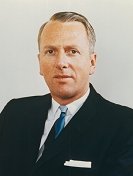
1969-70
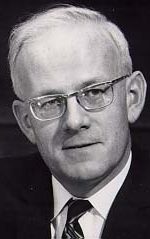
1970-1971
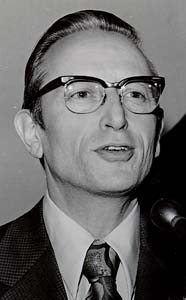
1971-1972

1979-81

1972-73

Beaubien 1973-75

1975-76

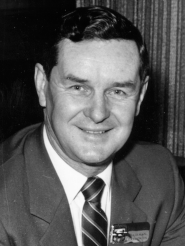

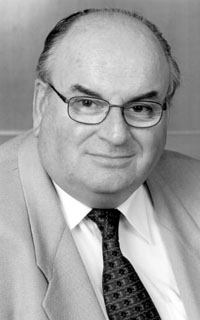
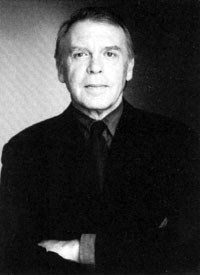

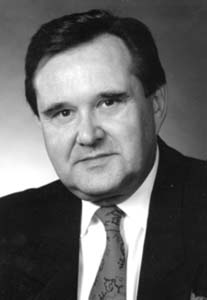

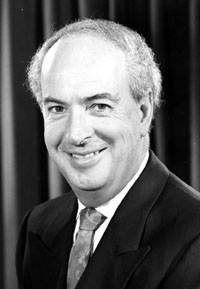
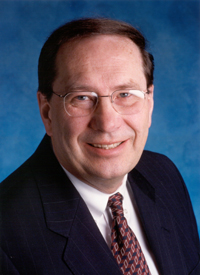

1998-2000







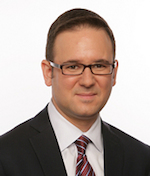
2014-2015



